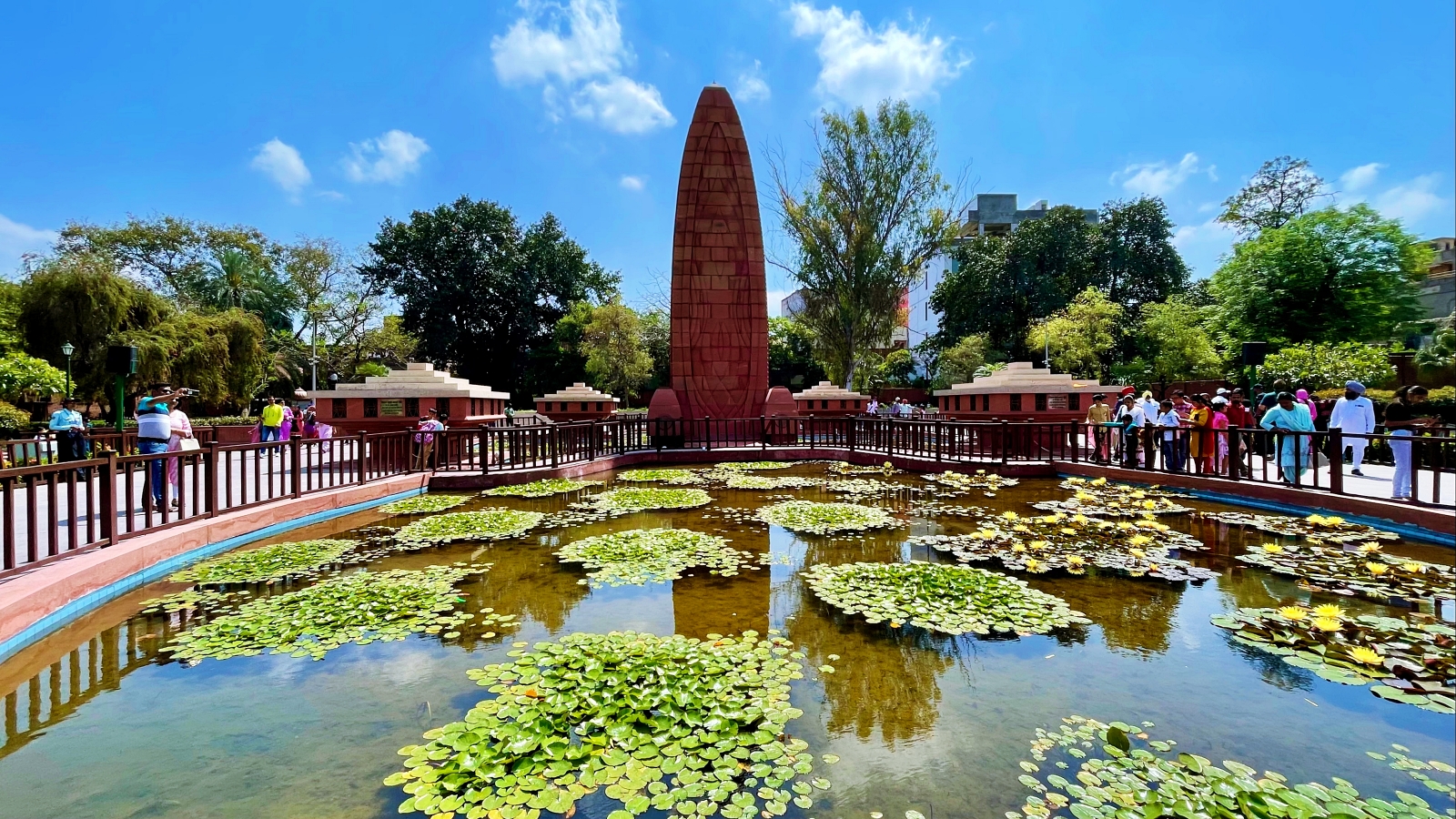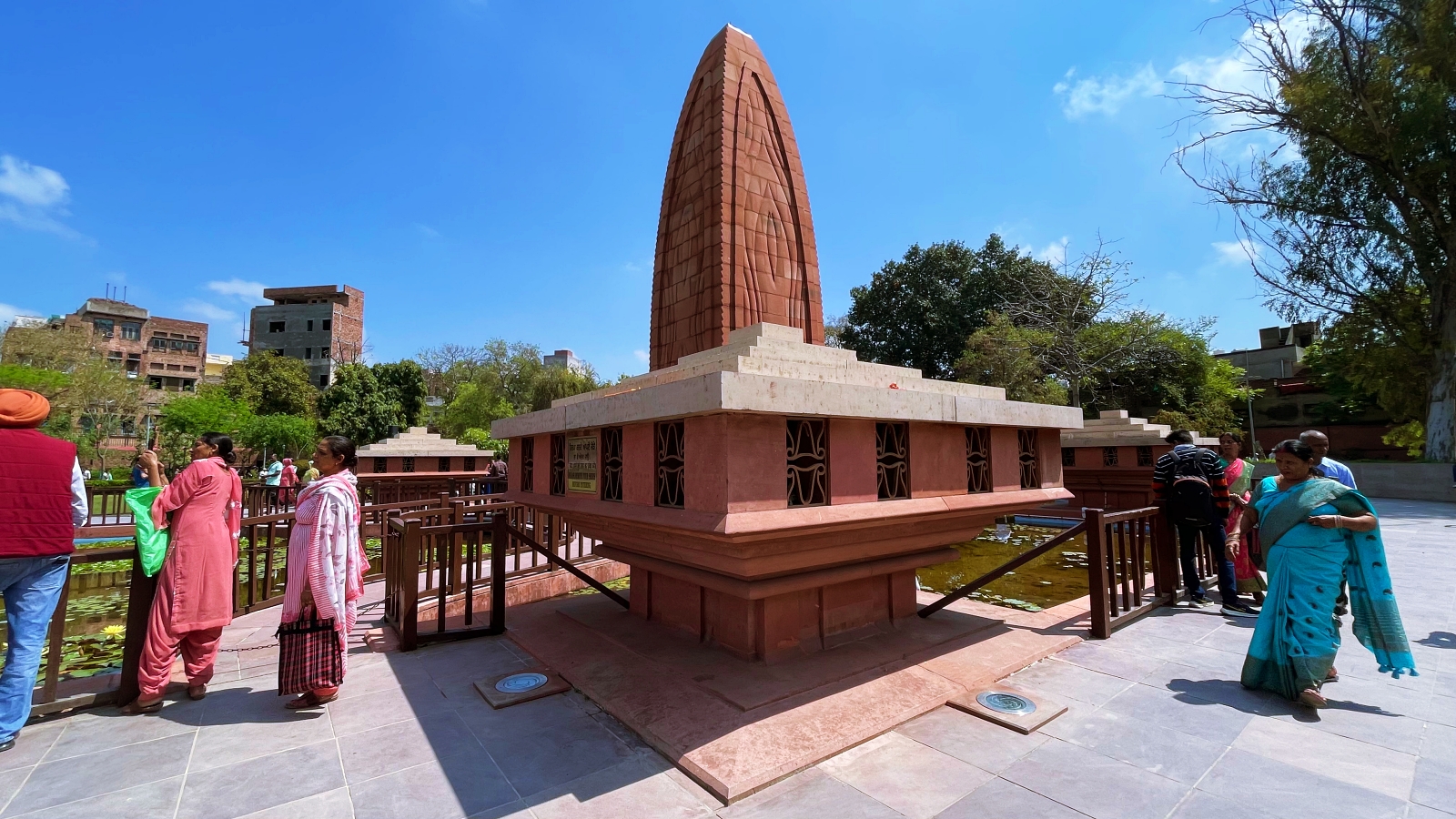Jallianwala Bagh – Transported back to the day of the massacre
Whenever I visit Jallianwala Bagh, I feel like I am transported back in time to the day of the massacre. The air is heavy with the memories of the innocent lives lost that fateful day. As I wander through the gardens, I can almost hear the cries of the people in agony. I can feel the anguish of the families whose loved ones were killed or injured in the senseless violence. The memorials, plaques and monuments scattered across the site serve as reminders of the tragedy that occurred there.

As I stand in the gardens, surrounded by bullet marks, I am reminded of the courage and strength of the people who suffered through the tragedy. The massacre at Jallianwala Bagh is a testament to the power of resilience and the strength of the human spirit. It is a reminder that we must never forget our past, and that we should remain ever-vigilant against injustice. Every time I visit Jallianwala Bagh, I am reminded of the tragedy that took place here over a century ago.

It’s often said that the spirits of the innocent victims of the massacre never left the place and still haunt it to this day. I’m not sure if that’s true, but I do know that the memories of the horrifying event remain strong and vivid in my mind. I look around the garden and can almost see the horror of April 13, 1919, when British forces opened fire on an unarmed crowd of peaceful protesters who had gathered to peacefully protest the oppressive colonial rule. The scene of families, young and old, being gunned down in cold blood is an image that still sends a chill down my spine.

The serenity of the garden is broken with memorials such as the Martyrs’ Gate and the Eternal Flame that serve as a reminder of the sacrifices made for freedom. The bullet marks on the wall are also a sad reminder of the tragic events that took place. Every time I visit Jallianwala Bagh, I can’t help but feel a deep sense of sadness and despair, but also a sense of pride in the courage and resilience of the people who fought for independence. The Jallianwala Bagh massacre may be a distant memory, but it will never be forgotten.
Table of Contents
A visit to the Jallianwala bagh in Amritsar
I recently took a trip to the Jallianwala Bagh in Amritsar and it was an eye-opening experience. As I stepped into the grounds, I was immediately struck by the silent atmosphere and the solemn mood that hung in the air. I walked around the premises, taking in the sights and sounds of the place. The memorial was quite moving, with several reminders of the tragic events that had taken place here. The monument in the centre of the garden was a powerful reminder of the massacre that had taken place here in 1919 when British troops opened fire on the unarmed protesters.

I also visited Martyr’s Well, which is located at the site. It is said that many people jumped into the well to avoid being shot by British soldiers. This was a harrowing reminder of the events that had taken place here. I made my way to the museum, which is located at the site. Here, I was able to learn more about the incident as well as the background of the people who had been affected by it. It was a very informative experience.

Jallianwala Bagh is a historic site located in Amritsar, India. It is best known for the tragic massacre that occurred there in 1919 and is a reminder of the violence and oppression inflicted upon many by the British colonial powers during the early 20th century. Today, the site is a memorial to those who perished in the massacre and has become a symbol of the Indian people’s struggle for independence. In this blog, we will explore the history, significance, and impact of the Jallianwala Bagh massacre and its legacy.
History of Jallianwala Bagh
Jallianwala Bagh is a garden in Amritsar, Punjab, India. It is located in the vicinity of the Golden Temple and is one of the most visited tourist destinations in India. The garden is best known for the tragic events known as the Jallianwala Bagh Massacre, which occurred on April 13, 1919. On that day, orders were given to British Indian Army troops to fire on an unarmed crowd of civilians who had gathered to peacefully participate in a protest meeting.

The shooting resulted in the death of hundreds of innocent people who were attending the peaceful protest, and the event is remembered today as one of the worst instances of colonial-era violence in India. In 1951, the Indian government designated the site as a national memorial, and it is now a popular pilgrimage site for people from all over India.
Significance of Jallianwala Bagh
Jallianwala Bagh is an important site of remembrance in India for the massacre of April 13, 1919, in which British troops opened fire on unarmed Indian civilians. This tragedy serves as a reminder of the oppression of colonial rule in India, and the bravery of the Indian people who fought for independence and freedom. Jallianwala Bagh is a symbol of the struggle for independence and is a place of pilgrimage for many Indians.
It is a site of pilgrimage for people from all over the world, who come to pay tribute to the martyrs of the massacre. The event is remembered each year with a moment of silence on the anniversary of the massacre. Jallianwala Bagh serves as a reminder of the price paid for freedom and is a reminder of the courage and resilience of the Indian people.
Massacre at Jallianwala Bagh
The Jallianwala Bagh massacre of 1919 was a shocking event in the history of India. It was a cold-blooded act of violence and brutality perpetrated by British troops on innocent Indian civilians on April 13, 1919, in the Jallianwala Bagh public garden in Amritsar, Punjab. The massacre occurred when a British officer, Brigadier-General Reginald Dyer, ordered around 400 troops to open fire on an unarmed crowd of people who had gathered in the Jallianwala Bagh to celebrate the Punjabi harvest festival of Baisakhi.
Over 1,400 people were killed and over 1,500 wounded in the Jallianwala Bagh massacre. The incident served as a catalyst for the Indian independence movement, which eventually led to the end of British rule in India in 1947.
Present-Day Jallianwala Bagh
Jallianwala Bagh is a public garden in Amritsar, India. It is best known for the horrific massacre that took place there in 1919, during the British Raj. On April 13th of that year, British army troops opened fire on an unarmed crowd of peaceful protestors, killing an estimated 379 people and wounding 1,200 more. The event has gone down in history as one of the most brutal acts of colonial rule. Today, Jallianwala Bagh serves as a memorial to those who lost their lives. It is a reminder of the power of peaceful protest, and a stark reminder of the suffering inflicted by imperialism.
Impact of the Massacre at Jallianwala Bagh
The Jallianwala Bagh Massacre of April 13th, 1919, is remembered as one of the most horrific incidents in India’s history. On this day, General Dyer ordered a group of British Indian Army soldiers to open fire on an unarmed crowd gathered in Jallianwala Bagh in Amritsar, Punjab. Hundreds of innocent civilians, including women and children, were killed in the massacre. The impact of Jallianwala Bagh was far-reaching and long-lasting.
It greatly exacerbated the British-Indian divide and led to a long period of civil unrest. It was instrumental in spurring the Indian independence movement and in creating a unified Indian nation. The Jallianwala Bagh Massacre serves as a reminder of the price of freedom and the immense suffering that can be inflicted in the pursuit of power.
Jallianwala Bagh is an important part of Indian history and a reminder of the atrocities committed against innocent lives. It is a place of pilgrimage for many and holds a special significance in the hearts of the people of India. The massacre at Jallianwala Bagh was a tragedy that shook the world and changed the course of history. It continues to be a stark reminder of the importance of human rights, freedom and justice. The present-day Jallianwala Bagh is a place of hope and remembrance, a place of contemplation and reflection.
Overall, my visit to Jallianwala Bagh was an eye-opening experience. It was a powerful reminder of the tragic events that had taken place here and it was a humbling experience to be in the presence of such history.



